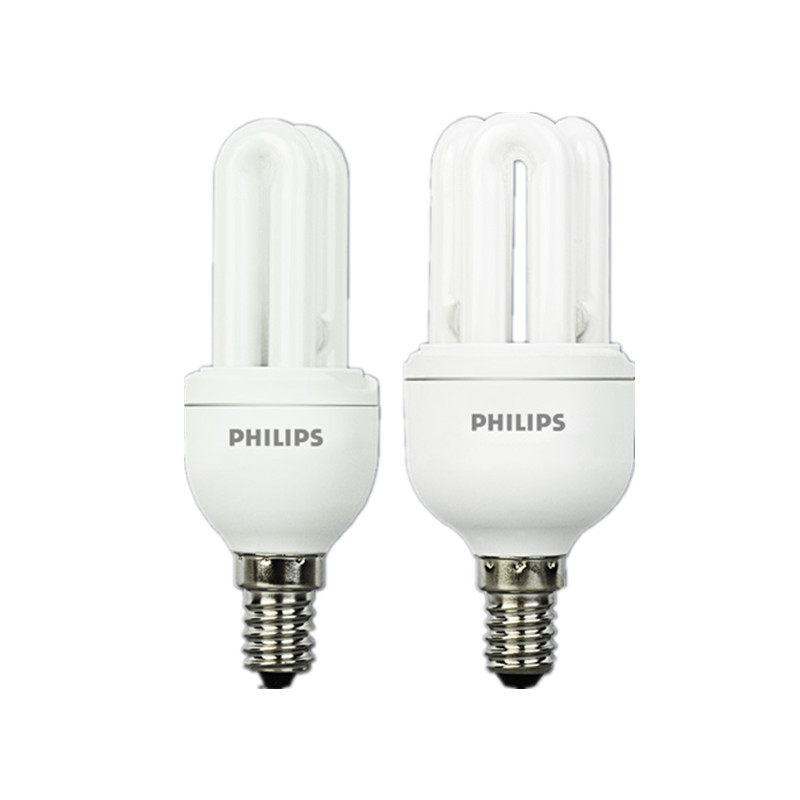The scientific name of the energy-saving lamp is compact three-color electronic fluorescent lamp (CFL lamp for short), which was first invented by foreign manufacturers in 1978. Because of its high luminous efficiency (5 times that of ordinary light bulbs), obvious energy-saving effect and long life (comparable to ordinary light bulbs) 8 times the light bulb), small size, easy to use and other advantages, it is valued and welcomed by people and countries all over the world. Rapid growth and steady improvement in quality, the country has taken it as a national key development of energy-saving products (green lighting products) as a promotion and use.
The working principle of the energy-saving lamp is to heat the lamp filament through the ballast. At about 1160K temperature, the filament starts to emit electrons (because some electron powder is coated on the filament), and the electrons collide with the argon atoms to produce inelastic collisions, and the argon atoms. After the collision, it obtains energy and then hits the mercury atom. The mercury atom undergoes ionization after absorbing the energy, and emits ultraviolet rays of 253.7nm. The ultraviolet rays excite the phosphor to emit light. Because the temperature of the filament when the fluorescent lamp is working about 1160K, which is 2200K higher than that of the incandescent lamp. -2700K is much lower, so its life is also greatly improved, reaching more than 5000 hours. Because it does not have the current heating effect like incandescent lamps, the energy conversion efficiency of phosphors is also very high, reaching more than 60 lumens per watt.
The effect of ordinary incandescent light is about 10 lumens per watt, and its life is about 2000 hours. Its working principle: when the lamp is connected to the circuit, the current flows through the filament, and the thermal effect of the current causes the incandescent lamp to emit continuous visible light and infrared rays. The phenomenon can be detected when the filament temperature rises to 700K. Due to the high filament temperature during operation, most of the energy is wasted in the form of infrared radiation.
In addition to white light, energy-saving lamps also have yellow (warm) light. Generally speaking, under the same wattage, an energy-saving lamp is 80% more energy efficient than incandescent lamps, the average life span is 6-8 times longer, and the heat radiation is only 20%. Under non-strict conditions, a 5-watt energy-saving lamp can be regarded as equal to a 25-watt incandescent lamp, a 7-watt energy-saving lamp is approximately equal to 40 watts, and a 9-watt energy-saving lamp is approximately equal to 60 watts.
For a long period of time, some places and manufacturers have blindly promoted energy-saving lamp projects. Due to the insufficient implementation of funds, technologies, raw materials and processes, the product quality cannot be guaranteed, and the product quality of each enterprise Some manufacturers do not produce according to the process requirements, and the assembly plant selects substandard lamps and components to make up, the quality is inferior and the price is low, which seriously damages the reputation of energy-saving lamps, low luminous efficiency, short life, and poor consistency. Caused by the statement that energy-saving lamps do not save money in the society, it has brought a great negative impact on the promotion of energy-saving lamps.
After more than 20 years of development, my country’s energy-saving lamp manufacturing technology has made great progress and improvement. Many products have approached or reached the advanced level of foreign countries. Due to the high quality and low price, the competitiveness in the international market is very high. However, there are still a large number of energy-saving lamp manufacturers in the market, disregarding national laws and regulations, and disregarding the interests of consumers, still mass-producing energy-saving lamps that are not “energy-saving”. About 5 yuan, consumers have limited recognition of products. In rural areas and most cities, there is still a large part of the market. Because most of the market is occupied by low-end products, it is difficult for good energy-saving lamp products to enter the market. It brings certain difficulties to the promotion of green lighting, but with the improvement of residents’ energy-saving awareness and the in-depth understanding of energy-saving lamp product knowledge, the market for high-quality energy-saving lamps is expanding day by day.


